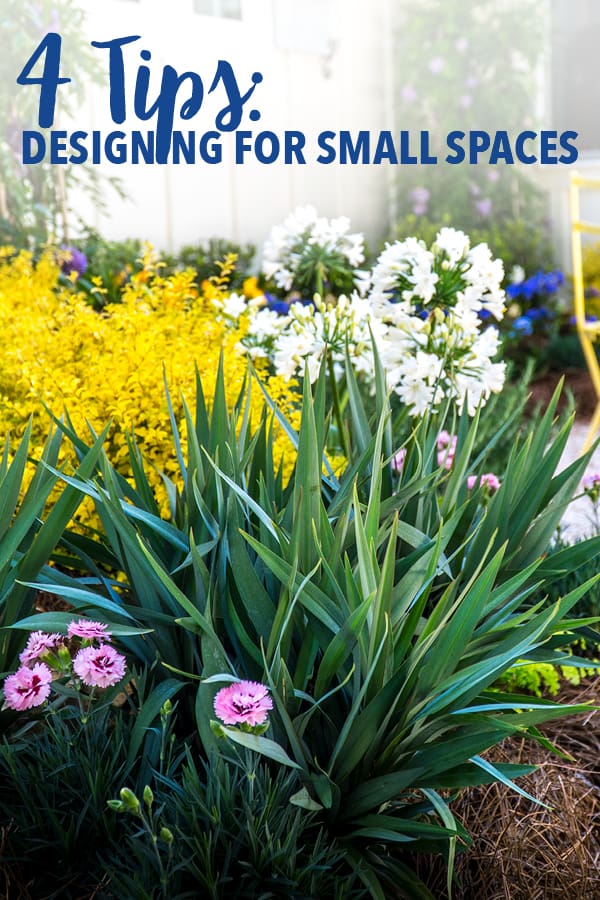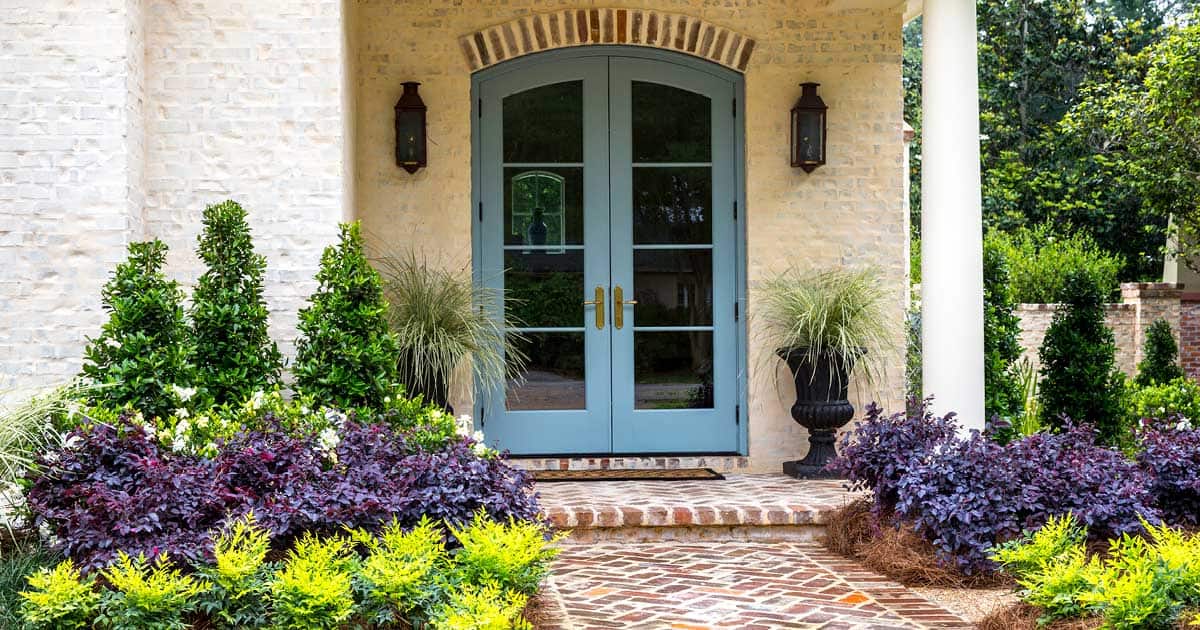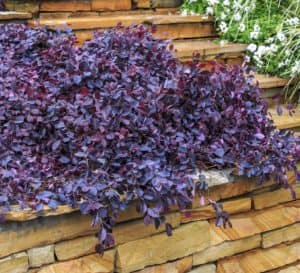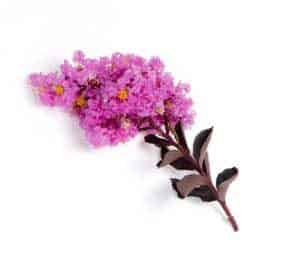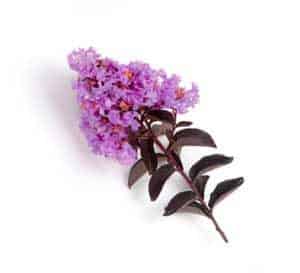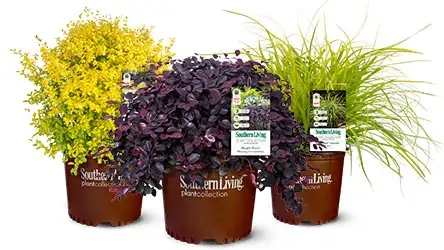1. Design Using Straight Lines
Plan your garden design so that plants and features follow horizontal and vertical lines around the outline of your space. Using long, straight lines can help give the illusion that your space is larger than it is.
Horizontal beds and small plant containers provide intimate low lines while trees, trellises, and other vertical structures provide contrast and a sense of movement without consuming needed ground space.
The Southern Living Plant Collection offers perfect small space vertical solutions; small trees such as the Delta series of Crapemyrtles or the Early Bird™ Crapemyrtles grow up to a manageable 5 – 8’ while the ‘Angyo Star’ Fatshedera or ‘Taiga’ Clematis love to spread beauty up the trellis.
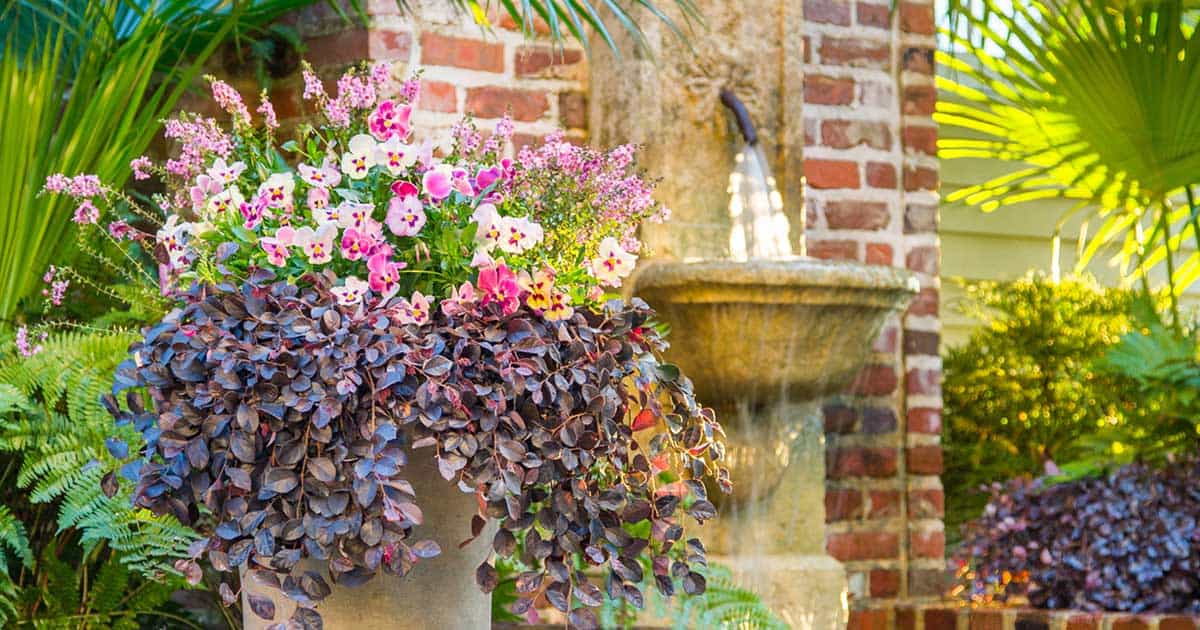
2. Add Drama With Water
Vertical features certainly can be the focal point of a small area, but you can add even more drama with a water feature. Construct a miniature rock or water garden, water fall, or water fountain in a corner to incorporate fluidity and relaxation. The rounded rocks and pool will soften the lines and allow you to select from a variety of water-loving plants such as ‘Black Ripple’ Colocasia.
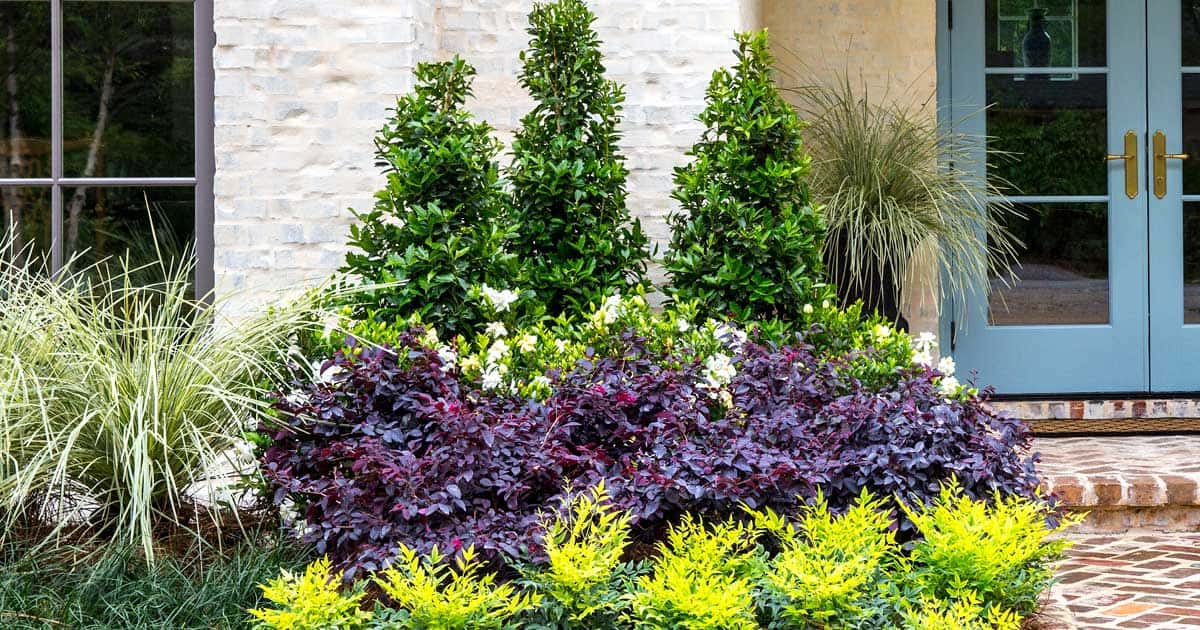
3. Arrange Plants By Height
Arrange plants, containers, and features so that the tallest are in the back and the shortest are in the front. Follow the same method when designing containers and window boxes with multiple plants, but add spiller plants in the front. Spiller plants, such as Purple Pixie® Weeping Loropetalums, help maximize space and variety.
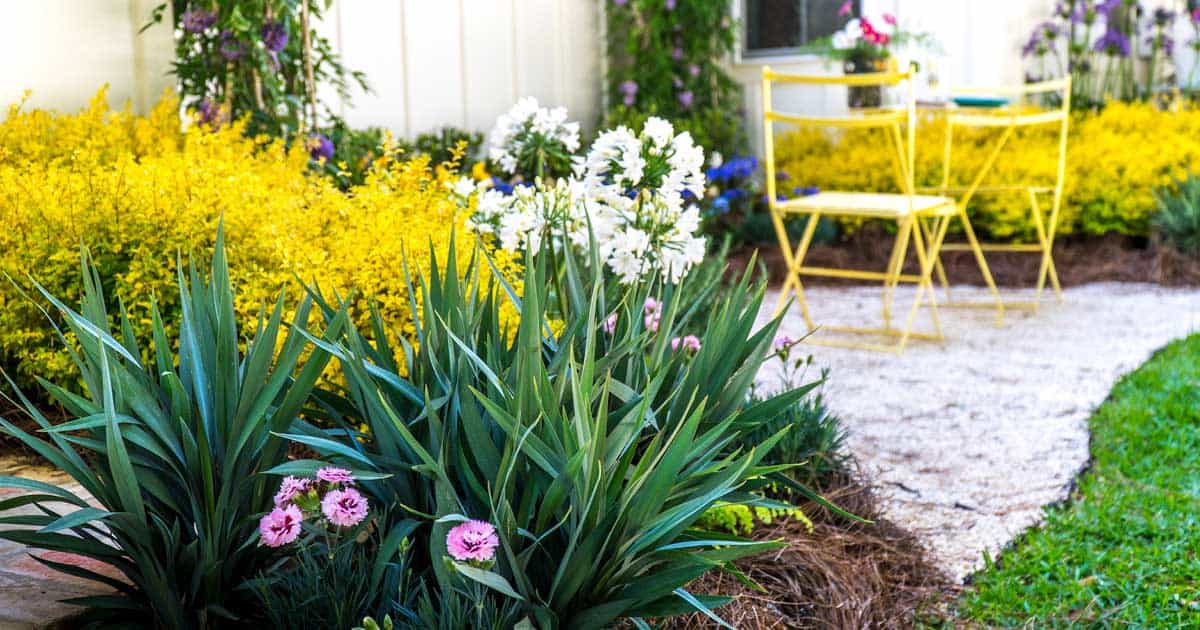
4. Use Complementary Colors
Select a combination of complementary warm and cool colored plants and containers. Warm colors appear closer to the eye and therefore should be placed in the back of the bed or container. To give the impression of depth, graduate from deep cool colors to white. For an example, begin with the bright golden foliage of ‘Sunshine’ Ligustrum, then the blue-tinged foliage in Clarity Blue™ Dianella and finish with the playful blossoms of Ever White™ Agapanthus.
Designing in small spaces can take patience and restraint but you can succeed; don’t be afraid to try new plants, and change out elements as you decide what works for you and your garden.
Ready to get started? View more plant combinations and garden plans.
Pin it for later!
